The candy industry is evolving rapidly with the integration of advanced technologies that are streamlining production, enhancing product quality, and improving operational efficiency. Today's candy manufacturers are embracing automation, smart machinery, and cutting-edge techniques to stay competitive, meet consumer demands, and reduce production costs. From ingredient preparation to packaging, every stage of the candy production process is benefiting from technological advancements. Let's explore how these innovations are transforming the candy production process and shaping the future of the industry.
The Modern Candy Production Process
The candy production process is a complex, multi-step journey that requires precision and consistency. Each stage plays a critical role in ensuring the final product meets both quality standards and consumer expectations. In this section, we'll walk through the key stages involved in modern candy production and highlight how new technologies are improving each phase.
Ingredient Preparation and Mixing
The first step in candy production involves preparing the ingredients, which may include sugar, corn syrup, glucose, flavorings, colorants, and other additives. Historically, this step was performed manually, requiring a lot of labor and time. However, with the advent of automated ingredient mixing systems, the process is now much more efficient and accurate.
Technological Advancements:
Automated Ingredient Handling: Modern candy factories use automated systems that weigh and transport ingredients with high accuracy. These systems ensure that the right quantities of each ingredient are used, reducing errors and ensuring consistency.
Precise Mixing: High-speed mixers equipped with smart sensors help maintain optimal consistency, ensuring that the candy mass is uniform and free of clumps. These machines automatically adjust speed, temperature, and mixing times based on the specific recipe, reducing the need for manual intervention.
These technological innovations have made ingredient preparation faster, more accurate, and less prone to human error, setting the stage for a more efficient production process.
Cooking, Tempering, and Molding
Once the ingredients are mixed, the candy mixture is cooked to the desired temperature and consistency. Cooking involves melting sugar and other ingredients, while tempering ensures that the final product will have the correct texture and shine. Molding follows, where the candy mixture is shaped into the desired form, whether it's hard candies, gummies, or chocolates.
Technological Advancements:
Precision Cooking Systems: Advanced cooking machines, such as batch cookers and continuous cookers, allow manufacturers to maintain precise temperature control. These systems reduce the risk of overcooking or undercooking, which can lead to texture and quality issues.
Automated Tempering Systems: In chocolate and some other candy products, tempering ensures that the final product has a smooth texture and glossy finish. Advanced tempering machines offer consistent temperature control, optimizing crystallization and reducing human error.
High-Speed Molding: In the molding stage, automated molding machines can form candies into various shapes quickly and accurately. These machines are designed to handle high volumes of production, reducing labor costs while maintaining high-quality standards.
Automation in cooking, tempering, and molding has significantly improved the speed and accuracy of these stages, ensuring a high level of product consistency and reducing waste.
Cooling and Setting
After the candy mixture is molded, it must be cooled and allowed to set. This stage is critical for ensuring that the candy maintains its shape and texture. If the candy is cooled too quickly or unevenly, it may crack or deform. Traditional cooling systems, such as cooling tunnels, were often slow and inefficient, but new cooling technologies have made the process faster and more uniform.
Technological Advancements:
Advanced Cooling Tunnels: Modern cooling tunnels are equipped with fans and temperature sensors that ensure a consistent cooling environment. These systems adjust airflow and temperature based on the type of candy being produced, improving the cooling process.
Automated Quality Checks: With the integration of smart sensors, cooling systems can now monitor the candy as it passes through the cooling tunnel, checking for inconsistencies or defects. If an issue is detected, the system can alert operators, preventing defective products from advancing to the next stage.
These cooling innovations help speed up the production cycle while ensuring that the candy sets properly and maintains its integrity.
How Automation Is Improving Efficiency at Each Stage
Automation is at the heart of the modern candy production process. By integrating automated systems at each stage—from ingredient preparation to packaging—candy manufacturers are achieving higher production speeds, greater consistency, and reduced operational costs. Here's how automation is enhancing efficiency across the different stages of candy production:
Speed and Throughput: Automated systems can operate continuously without the need for breaks, increasing production output. Automated mixers, cookers, and molding machines work at higher speeds than manual processes, allowing manufacturers to meet growing consumer demand.
Consistency and Quality Control: With automated systems, manufacturers can ensure that every batch of candy is produced to the exact specifications. The precision of automated machines minimizes human error, ensuring that the candy is consistently the same in terms of texture, taste, and appearance.
Labor Cost Reduction: By replacing manual labor with automated systems, candy manufacturers can reduce staffing requirements and the associated labor costs. Automation also reduces the likelihood of human errors, which can lead to costly mistakes or product recalls.
Real-Time Monitoring: Many modern candy production machines are equipped with sensors and IoT (Internet of Things) capabilities that enable real-time monitoring and data collection. This allows operators to track machine performance, identify issues before they escalate, and make adjustments in real-time, ensuring smooth production runs.
Waste Reduction: Automation also helps reduce waste by ensuring precise ingredient measurements and minimizing production errors. Automated systems detect anomalies quickly, helping to prevent defective products from entering the production line and reducing material waste.
Key Innovations in Candy Manufacturing
Advances in Ingredient Handling and Precision Mixing
Ingredient handling and mixing are foundational steps in candy production, and new technologies have made these processes more efficient, precise, and automated. Traditional mixing processes were often time-consuming and prone to human error, but with modern advancements, ingredient handling has become faster and more consistent.
Technological Innovations:
Automated Ingredient Dispensers: These systems automatically measure and combine ingredients with precise accuracy. This ensures that each batch of candy maintains consistent flavor and texture, which is critical for product quality and brand consistency.
Precision Mixing Systems: New high-speed mixers equipped with smart sensors can adjust mixing speed, temperature, and timing in real-time based on the candy recipe. This guarantees a more uniform mixture, reducing variability in the final product.
These advancements help streamline the production process, enhance consistency, and ensure that every batch is of the highest quality.
New Technologies in Cooking and Heating Systems
Cooking is one of the most crucial steps in candy manufacturing. Traditional cooking methods, while effective, were often slow and required significant energy input. Today, modern cooking systems incorporate advanced heating and temperature control mechanisms that have dramatically improved both speed and energy efficiency.
Technological Innovations:
Continuous Cooking Systems: These systems provide consistent, high-quality results by maintaining precise temperature control throughout the entire cooking process. The automation of this step reduces human error, improves heat distribution, and results in a more uniform product.
Energy-Efficient Heat Exchangers: By incorporating heat exchanger technology, manufacturers can recover heat and reuse it within the system, significantly reducing energy consumption and production costs.
These technologies ensure that candy is cooked evenly and efficiently, helping manufacturers meet consumer demand while reducing operating costs.
The Rise of Robotic Automation in Molding and Shaping
Robotics has made a huge impact on the candy production process, particularly in the molding and shaping stages. Traditional molding methods relied on manual labor, which was time-consuming and inconsistent. Today, robotic systems handle this process with incredible speed and accuracy, significantly improving production efficiency.
Technological Innovations:
Robotic Molding Systems: Robots now handle the precise placement of candy into molds, which ensures uniform shapes and sizes. These systems can mold various candy types, from chocolates to gummies, with great flexibility.
Automated Shaping and Cutting: Advanced machines use robotics to cut candy into specific shapes and sizes with high precision. This eliminates the need for manual labor, reducing errors and speeding up production.
With robotics, manufacturers can produce candies faster, more consistently, and with minimal human intervention.
Customization Capabilities for Different Candy Types
As consumer preferences become more diverse, the ability to customize candy production processes has become increasingly important. Modern manufacturing machines offer flexibility, enabling manufacturers to produce a wide range of candy types using the same equipment.
Technological Innovations:
Modular Production Lines: These lines allow manufacturers to quickly switch between different candy products without needing to retool or invest in new equipment. This flexibility is essential for meeting market demands, especially for seasonal or limited-edition products.
Variable Forming and Molding Machines: These machines can produce candies in various shapes, sizes, and flavors, offering manufacturers the ability to diversify their product offerings while using the same machinery.
Customization technologies give manufacturers a competitive edge by allowing them to quickly respond to consumer trends and create unique candy products.
Improvements in Consistency and Quality Control
One of the primary goals in candy manufacturing is achieving consistency across all products. Inconsistent products can lead to consumer dissatisfaction and damage to brand reputation. With the integration of new technologies, manufacturers can ensure that every batch of candy meets the same high standards.
Technological Innovations:
Real-Time Monitoring Systems: These systems continuously track variables such as temperature, ingredient ratios, and mixing times, allowing for real-time adjustments. If an issue arises, it can be immediately corrected, ensuring that the candy maintains consistent quality.
Automated Quality Control: Sensors and cameras are now used to inspect candies for defects such as cracks or irregular shapes. This ensures that only high-quality products are packaged and distributed.
These advancements in quality control systems ensure that candy manufacturers produce consistently high-quality products with minimal waste.
Packaging Innovations in the Candy Industry
The Role of Packaging in Preserving Candy Quality and Appeal
Packaging serves as more than just a protective barrier—it helps maintain the integrity of the candy and ensures that it remains fresh, flavorful, and visually appealing. Modern packaging solutions offer better protection from environmental factors like humidity, light, and air, which can degrade candy quality.
Technological Innovations:
Vacuum and Nitrogen Packaging: These methods remove air from the packaging or replace it with nitrogen to reduce oxidation and preserve the freshness of the candy for longer periods.
Barrier Packaging Films: Advanced packaging materials provide superior protection against moisture, oxygen, and light, ensuring that the candy retains its taste, texture, and appearance throughout its shelf life.
Trends in Eco-Friendly and Sustainable Packaging Solutions
As sustainability becomes a growing priority for consumers, candy manufacturers are turning to eco-friendly packaging solutions. These solutions are designed to reduce environmental impact without compromising product safety or quality.
Technological Innovations:
Biodegradable Packaging Materials: Many manufacturers are adopting biodegradable and compostable materials, such as plant-based films, to replace traditional plastic packaging. This reduces waste and aligns with consumer preferences for environmentally responsible products.
Recyclable and Reusable Packaging: Some companies are exploring the use of recyclable and reusable packaging to encourage sustainability throughout the candy supply chain.
Eco-friendly packaging solutions are helping manufacturers reduce waste and appeal to environmentally conscious consumers.
Smart Packaging Technologies (e.g., QR Codes, Temperature-Sensitive Packaging)
Smart packaging technologies offer candy manufacturers the ability to engage with consumers in new ways while improving product safety and convenience.
Technological Innovations:
QR Codes and NFC Tags: These technologies allow consumers to scan packaging for additional product information, promotions, or even traceability features. This creates a more interactive and engaging experience for the customer.
Temperature-Sensitive Packaging: Temperature-sensitive packaging changes color or provides alerts when the candy has been exposed to temperature conditions that could affect its quality. This is especially useful for chocolates and other temperature-sensitive products.
Smart packaging not only improves the consumer experience but also enhances product safety and brand engagement.
Automation in Packaging: From Wrapping to Labeling
Packaging automation is transforming the way candy is wrapped, labeled, and prepared for distribution. Automated packaging systems are capable of high-speed wrapping and labeling, reducing labor costs and ensuring packaging consistency.
Technological Innovations:
Automated Wrapping Machines: These machines wrap candies quickly and consistently, ensuring that each product is sealed correctly and protected from contamination.
Robotic Labeling Systems: Robots equipped with vision systems automatically apply labels to packaging with precision. This eliminates errors in labeling and speeds up the production line.
Automation in packaging streamlines the process, reducing manual labor and improving efficiency.
Custom Packaging Options for Product Differentiation
Custom packaging is becoming increasingly important as brands seek to differentiate their products in a crowded market. Packaging can play a significant role in marketing, creating a unique consumer experience.
Technological Innovations:
Customized Print Designs: High-quality digital printers allow manufacturers to create eye-catching packaging with custom designs, logos, and promotional messages that appeal to consumers.
Shaped and Unique Packaging: Advances in packaging molding allow manufacturers to create candy packaging in fun, unique shapes that stand out on store shelves.
Custom packaging options not only enhance a product's visual appeal but also help candy brands stand out and attract more customers.
The Role of Automation in Modern Candy Production
Benefits of Automation in Candy Manufacturing
Automation offers numerous advantages that are reshaping the candy manufacturing landscape. Here are the most significant benefits:
Increased Production Speed: Automated systems can operate continuously without the need for breaks or shifts, significantly increasing production speed. This is especially crucial during high-demand periods or for large-scale operations that need to meet consumer expectations quickly.
Improved Consistency and Quality Control: Automation ensures that every batch of candy is produced with the same precision. With real-time monitoring and automated quality checks, manufacturers can minimize errors, reduce variations in texture and appearance, and ensure the final product meets exact specifications.
Reduced Labor Costs: By replacing manual labor with automated systems, manufacturers can reduce the need for extensive workforce management and focus on more complex tasks. Automation handles repetitive processes, enabling businesses to reduce labor costs while maintaining operational efficiency.
Minimized Waste: Automated systems ensure precise ingredient measurements, cutting down on waste and making better use of resources. Through real-time adjustments and consistent process control, waste is minimized, helping manufacturers save on raw material costs.
Enhanced Safety: Automation minimizes the risk of accidents in the production environment by reducing human involvement in potentially hazardous processes, such as heating, cooking, and packaging.
Key Areas Where Automation Is Transforming the Industry
Automation is revolutionizing several critical stages of candy production. Below are the primary areas where automation is making a significant impact:
Ingredient Handling and Mixing: Automated ingredient dispensers ensure precise measurements of sugar, syrups, and other ingredients, streamlining the mixing process and ensuring consistency in each batch.
Cooking and Heating: Continuous cooking systems and automated temperature control mechanisms reduce human error and provide consistent cooking times, ensuring that candies are cooked at the ideal temperature for the perfect texture.
Molding and Shaping: Robotic systems are now used to mold and shape candies with high precision, whether it's chocolates, gummies, or hard candies. These robots operate at high speeds and maintain uniformity across products, enhancing productivity.
Cooling and Packaging: Automated cooling tunnels and robotic packaging systems streamline the cooling process and prepare the candies for packaging without delay. These systems also offer flexibility for various packaging formats, whether it's wrapping, labeling, or bagging.
Quality Control: Automated vision systems inspect candies for defects such as cracks, improper shapes, or discoloration, eliminating the risk of defective products reaching consumers.
Future Trends in Candy Manufacturing and Packaging
The Growing Role of AI and Machine Learning in Candy Production
Artificial intelligence (AI) and machine learning are beginning to play an important role in optimizing candy production. AI systems can monitor production lines in real time, identify patterns in data, and predict potential issues before they occur, thus minimizing downtime and maximizing efficiency.
Potential Applications:
Predictive Maintenance: AI can analyze equipment performance data to predict when machines are likely to fail or require maintenance, allowing manufacturers to address issues proactively before they lead to production delays.
Quality Control: Machine learning algorithms can analyze data from sensors to identify subtle variations in candy quality, such as texture, size, or shape. AI can automatically adjust production parameters to correct deviations, ensuring consistent product quality.
Demand Forecasting: AI systems can also analyze market trends and historical data to forecast demand more accurately, helping manufacturers plan production schedules and avoid overproduction or stockouts.
Advancements in 3D Printing for Candy Design and Production
3D printing technology is starting to find its place in candy manufacturing, offering creative possibilities and unique production methods. This technology allows manufacturers to design and produce customized candy shapes and designs with high precision, providing a new level of creativity for candy makers.
Applications in Candy Production:
Custom Candy Shapes and Designs: 3D printing allows for intricate and customized candy designs that would be difficult or impossible to achieve with traditional molding methods.
Personalized Candy: Companies can offer personalized candies for special occasions like birthdays, weddings, or corporate events. 3D printing enables rapid prototyping and mass customization of candy designs.
3D printing opens the door to personalized, innovative candy designs that appeal to consumers' desire for unique, customizable products.
The Future of Personalized and Customized Candy Products
Consumer preferences are shifting towards more personalized and unique products, and candy is no exception. As technology advances, manufacturers will be able to offer more customizable candy options to meet individual tastes and preferences.
Future Possibilities:
Personalized Flavors and Ingredients: Consumers may be able to choose their favorite flavors or ingredients to create custom candy recipes. Personalized candy could become a popular trend in both the retail and online markets.
Customized Packaging: Alongside personalized candy, customized packaging that reflects individual tastes or occasions is gaining popularity. This trend is expected to grow, with options for personalized wrappers and boxes becoming more common.
Emerging Packaging Trends: Biodegradable Materials, Minimalistic Designs
As sustainability becomes a primary concern for both consumers and manufacturers, packaging innovation is moving towards eco-friendly solutions. The candy industry is embracing biodegradable, recyclable, and reusable packaging materials to meet consumer demand for environmentally responsible products.
Packaging Innovations:
Biodegradable Materials: Manufacturers are experimenting with biodegradable films and wrappers made from plant-based materials, such as cornstarch and cellulose. These materials break down naturally, reducing the environmental impact of candy packaging.
Minimalistic Designs: Packaging designs are moving towards minimalism, with simpler, more streamlined graphics and materials. This trend reflects a broader societal shift towards simplicity and environmental consciousness.
Edible Packaging: In the future, edible packaging could become a mainstream solution. Some manufacturers are already exploring edible candy wrappers made from ingredients like rice paper, allowing for zero-waste products.
How to Choose the Right Manufacturing and Packaging Solutions
Selecting the right manufacturing and packaging solutions is crucial for the success of any candy production operation. The right machinery and packaging systems can significantly impact the efficiency of production, product quality, and overall cost-effectiveness. To ensure you make an informed decision, it's essential to consider several key factors when evaluating manufacturing and packaging equipment for your candy production needs.
Key Factors to Consider When Selecting Manufacturing and Packaging Equipment
When choosing the right manufacturing and packaging solutions, several factors must be taken into account to ensure optimal performance, cost-efficiency, and long-term sustainability.
Production Volume Requirements: The equipment you choose should align with the scale of your operation. High-speed production lines may be necessary for large-scale manufacturers, while smaller, more versatile systems may be a better fit for boutique or artisanal candy producers. It's essential to assess your current production needs as well as future growth projections to avoid investing in equipment that may become obsolete or inadequate as demand increases.
Compatibility with Product Types: Different candy products—whether chocolates, gummies, or hard candies—require different types of machinery. When choosing equipment, ensure that it is compatible with your product types and can handle variations in ingredients, molding, and packaging requirements.
Automation and Efficiency: Look for equipment that incorporates automation to improve production speed, reduce human error, and ensure consistency. Automated systems that handle mixing, molding, and packaging with minimal human intervention can boost efficiency and reduce operating costs.
Energy Efficiency: The energy consumption of manufacturing and packaging equipment can significantly impact your bottom line. Look for energy-efficient machinery that reduces energy use while maintaining high performance. This not only cuts costs but also supports sustainability goals by minimizing your environmental footprint.
Maintenance and Support: The reliability and ease of maintenance of the machinery are critical for minimizing downtime. Choose equipment from reputable manufacturers that offer ongoing support, service contracts, and readily available spare parts. Systems that are easy to maintain and repair will help keep your production line running smoothly.
Cost vs. Return on Investment (ROI): While the initial cost of equipment is an important consideration, it is equally crucial to evaluate the long-term return on investment (ROI). Consider factors such as energy efficiency, maintenance costs, production speed, and reliability when calculating the potential ROI.
The Importance of Selecting the Right Supplier and Machinery for Your Needs
Choosing the right supplier and machinery for your candy production process can make or break your business. A reliable supplier ensures that you are investing in high-quality, durable equipment that can meet the demands of your production line.
Expert Guidance: A reputable supplier will offer expert guidance in selecting machinery that meets your unique production requirements. They will help you choose equipment that aligns with your production goals, budget, and scalability needs.
Quality Assurance: The right supplier provides high-quality machinery that is built to last. Look for suppliers that offer warranties and certifications that ensure their equipment meets industry standards and regulatory requirements.
After-Sales Support: The best suppliers offer comprehensive after-sales services, including installation, training, and ongoing technical support. Having access to support when issues arise can prevent prolonged downtime and production delays.
Supplier Reputation and Experience: Choose a supplier with a proven track record in the candy industry. Experienced suppliers will have a deeper understanding of the challenges you face in production and will be better positioned to provide solutions that improve efficiency and product quality.
Customization Options and Scalability for Future Growth
As the candy market continues to evolve, manufacturers must adapt to changing consumer preferences and market demands. To remain competitive, it's important to choose manufacturing and packaging equipment that is flexible and scalable. Customization options allow you to tailor your production line to specific needs, while scalability ensures that your machinery can grow with your business.
Flexible Production Lines: Look for equipment that offers modularity, allowing you to adjust the line as your product offerings change. Customizable machines can help you quickly adapt to seasonal flavors, limited-edition products, or new candy types.
Scalability: Your business may experience fluctuations in demand, so it's essential to select equipment that can scale up or down as needed. Investing in scalable machinery will help future-proof your operation and accommodate increased production needs without a complete overhaul.
Adaptability to New Technologies: As the candy industry embraces new technologies like automation, AI, and 3D printing, choosing equipment that is adaptable to emerging innovations ensures that your production line remains cutting-edge.
The selection of advanced manufacturing and packaging solutions plays a pivotal role in the success of any candy production business. By carefully considering factors such as production volume, product compatibility, automation, energy efficiency, and long-term ROI, manufacturers can make informed decisions that optimize their operations. The right equipment not only improves production speed and product quality but also reduces costs, enhances consistency, and minimizes waste, helping manufacturers stay competitive in the ever-evolving market.
Summary of the Benefits of Advanced Manufacturing and Packaging Solutions
Advanced manufacturing and packaging solutions offer several key benefits that drive efficiency, enhance product quality, and reduce operational costs. These benefits include:
Faster production speeds and reduced lead times
Greater consistency and uniformity in product quality
Reduced labor costs and minimized human error through automation
Improved sustainability with energy-efficient equipment and eco-friendly packaging options
Scalability to meet growing production demands and market trends
The Future of the Candy Industry and How Manufacturers Can Stay Competitive
The future of the candy industry lies in embracing innovation. As consumer preferences shift towards personalized, eco-friendly, and high-quality products, candy manufacturers must adopt advanced technologies and stay agile to meet these evolving demands. Manufacturers who invest in automation, sustainable packaging, and scalable solutions will be well-positioned for long-term success.
Encouraging Continuous Innovation to Meet Market Demands and Consumer Expectations
To remain competitive, candy manufacturers must commit to continuous innovation. This includes investing in new manufacturing technologies, exploring new product categories, and leveraging advancements in packaging to enhance the consumer experience. By staying ahead of industry trends and embracing the latest innovations, manufacturers can meet changing consumer expectations and maintain a strong market position.


 ENG
ENG
 English
English 中文简体
中文简体 русский
русский Français
Français Español
Español عربى
عربى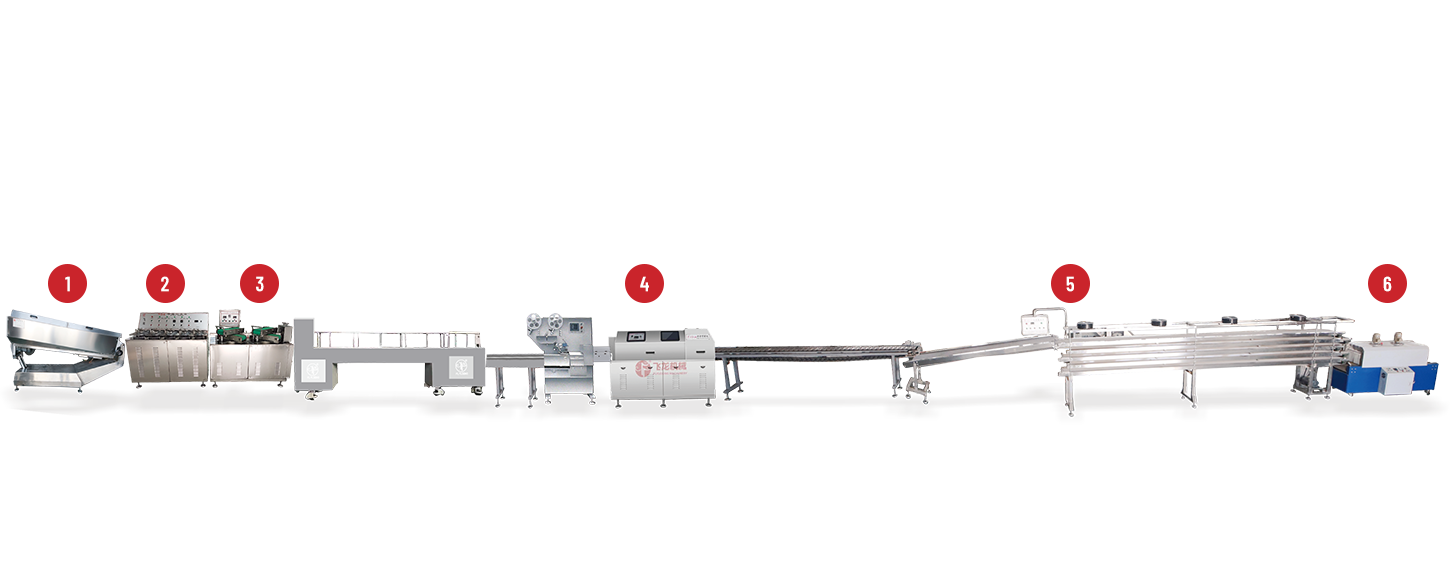
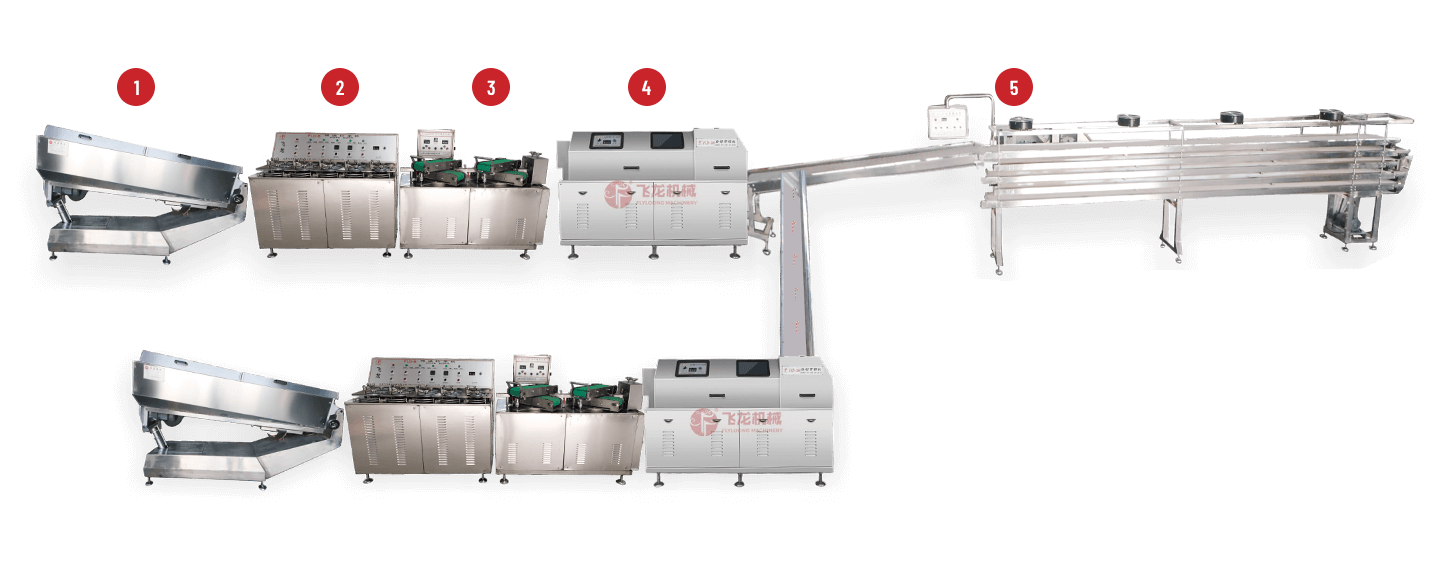
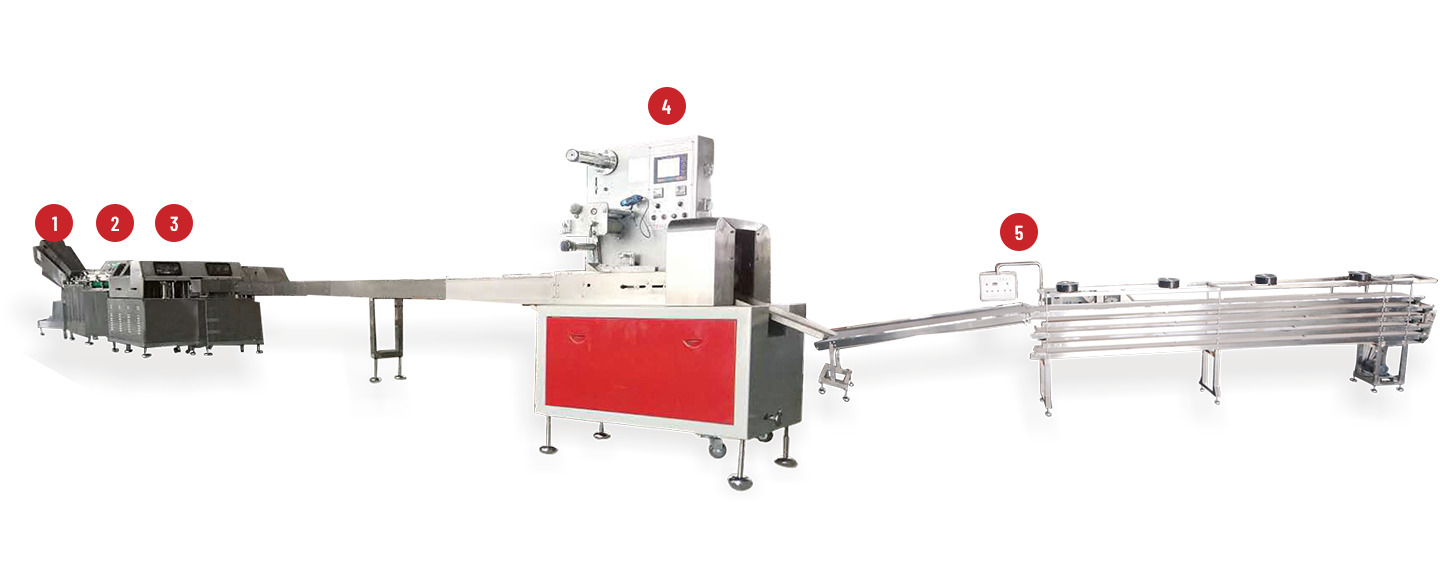
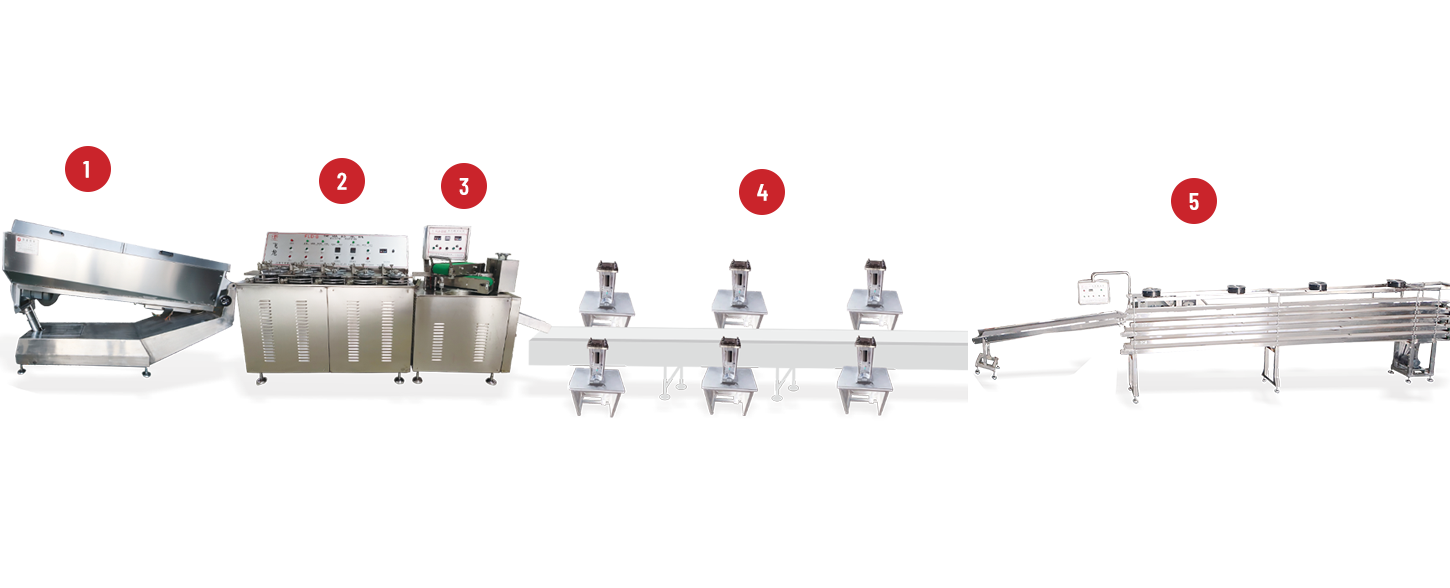
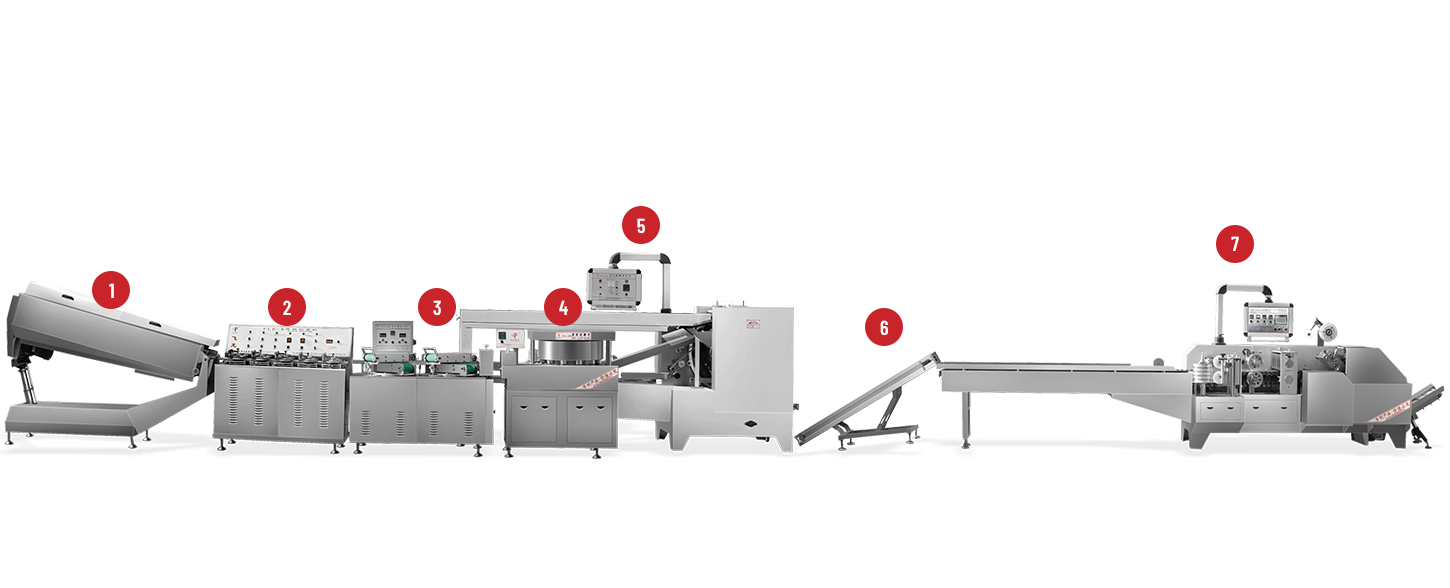
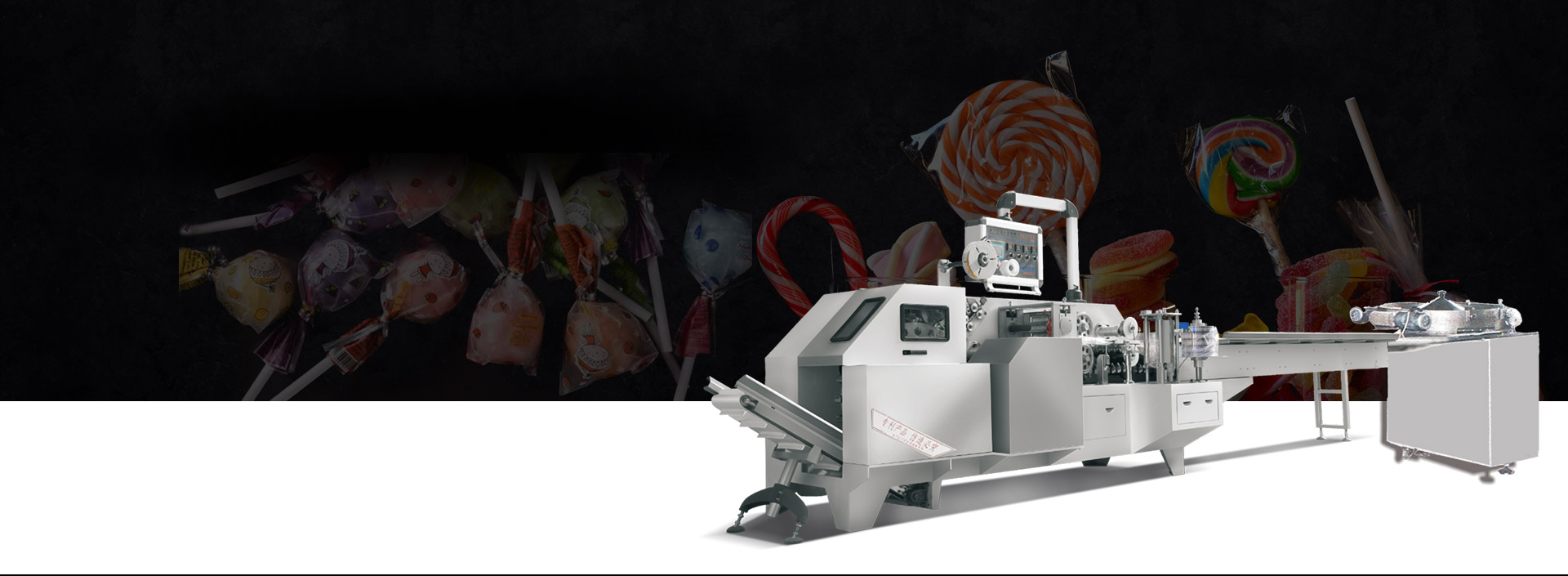
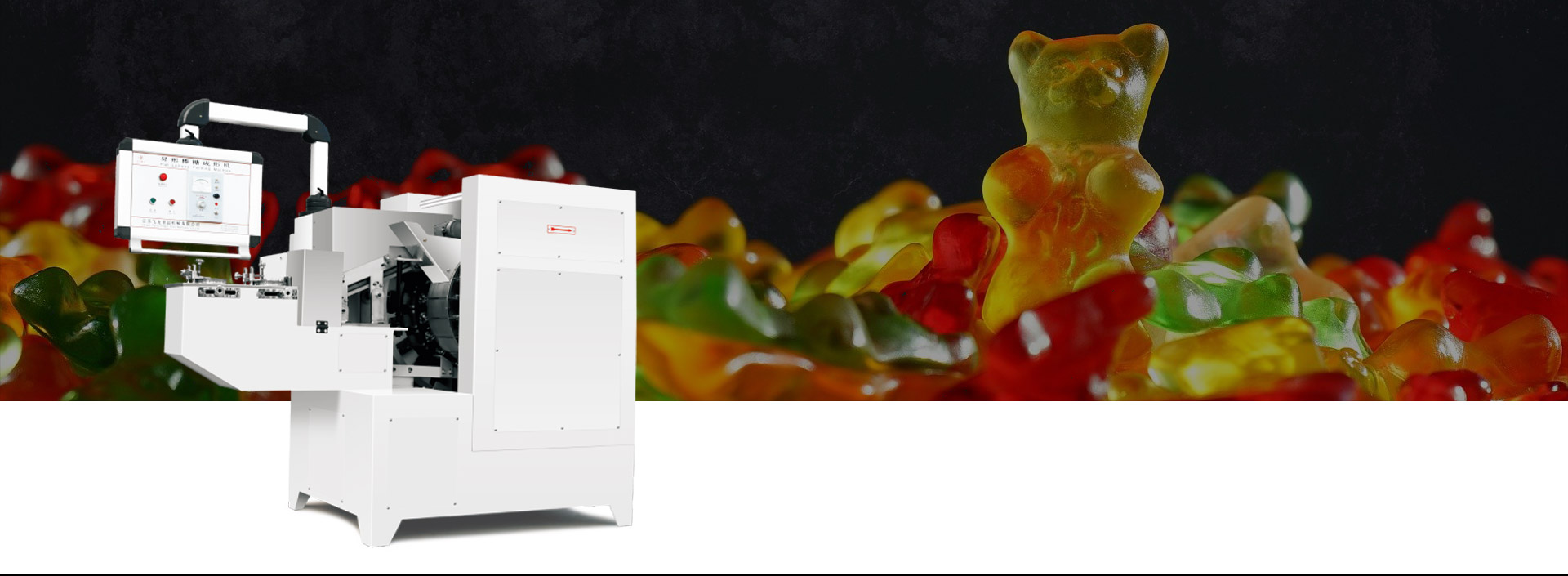
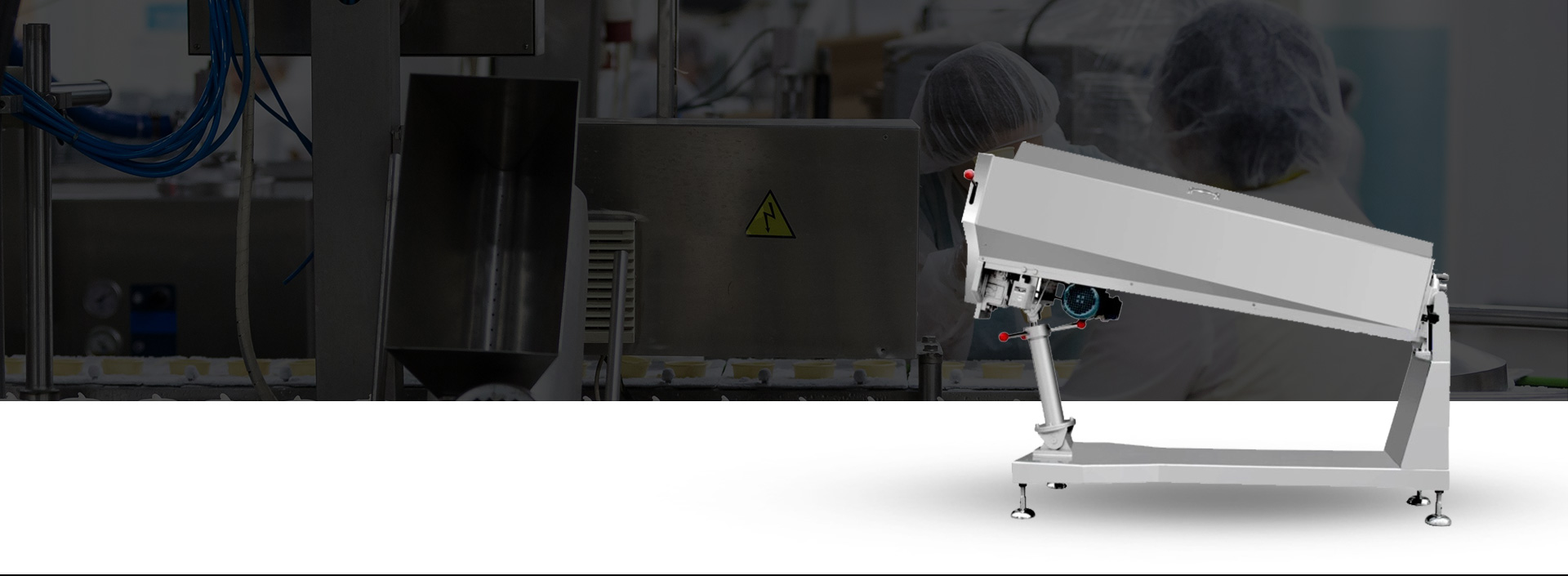
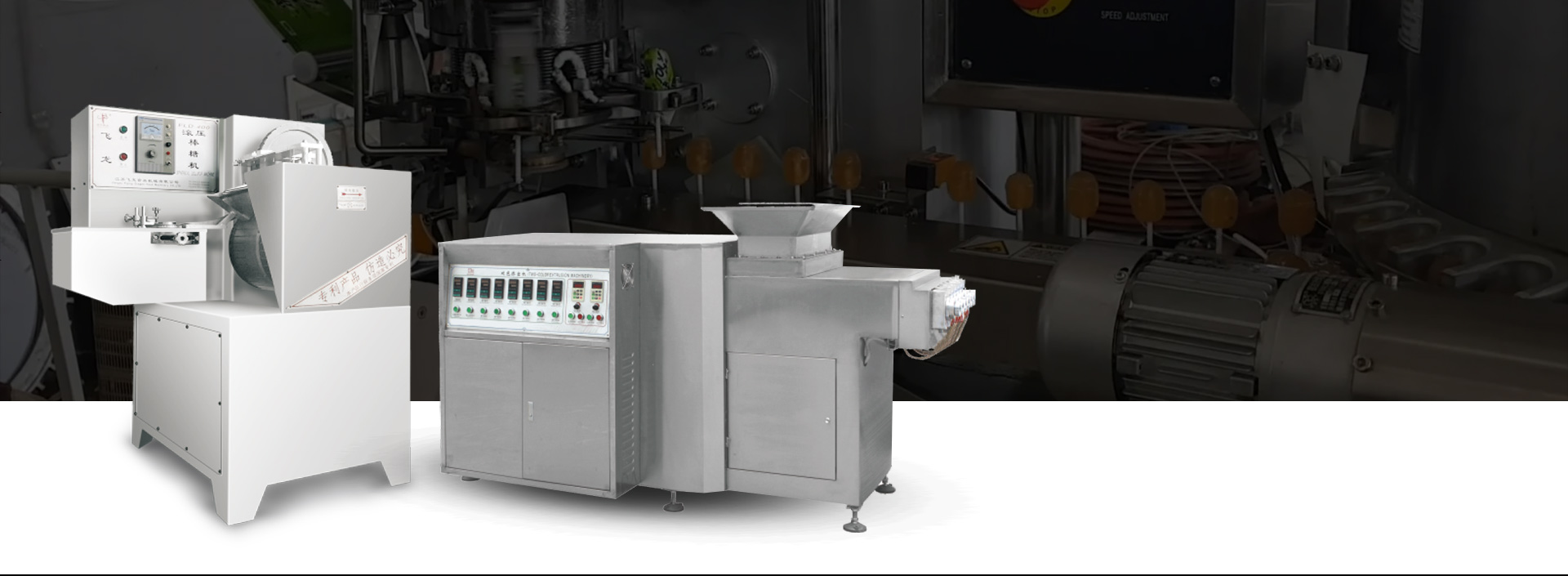
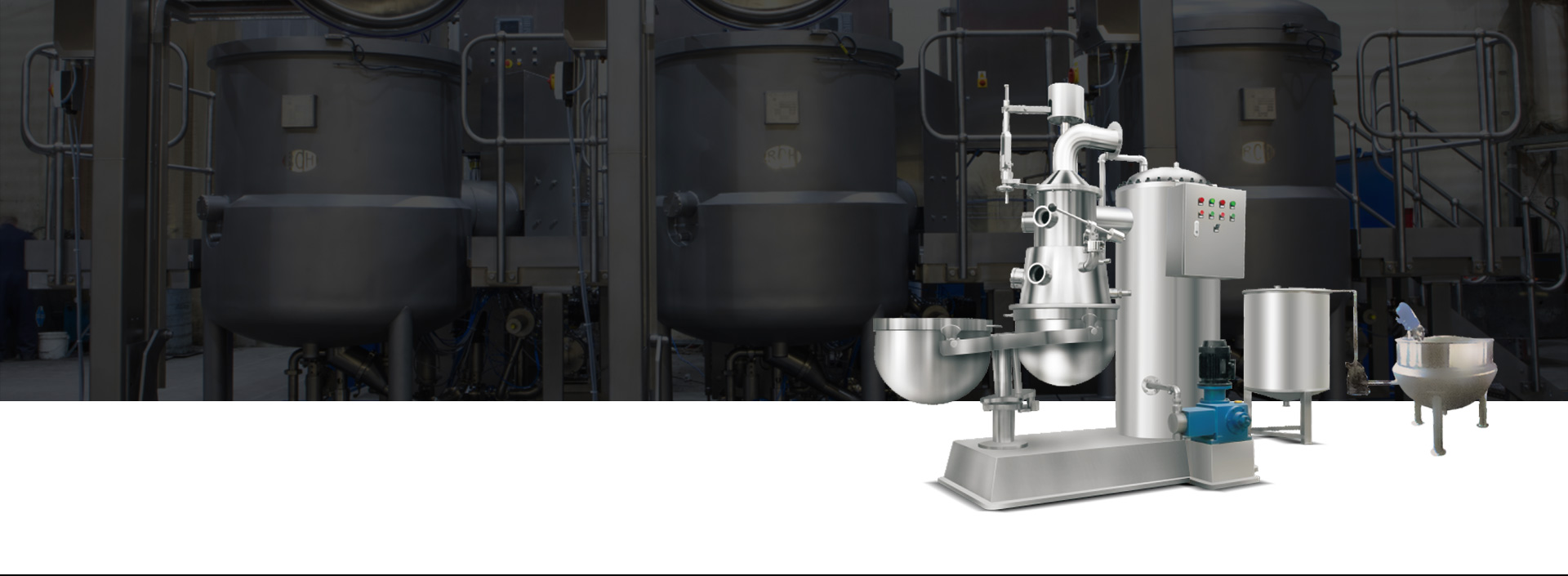

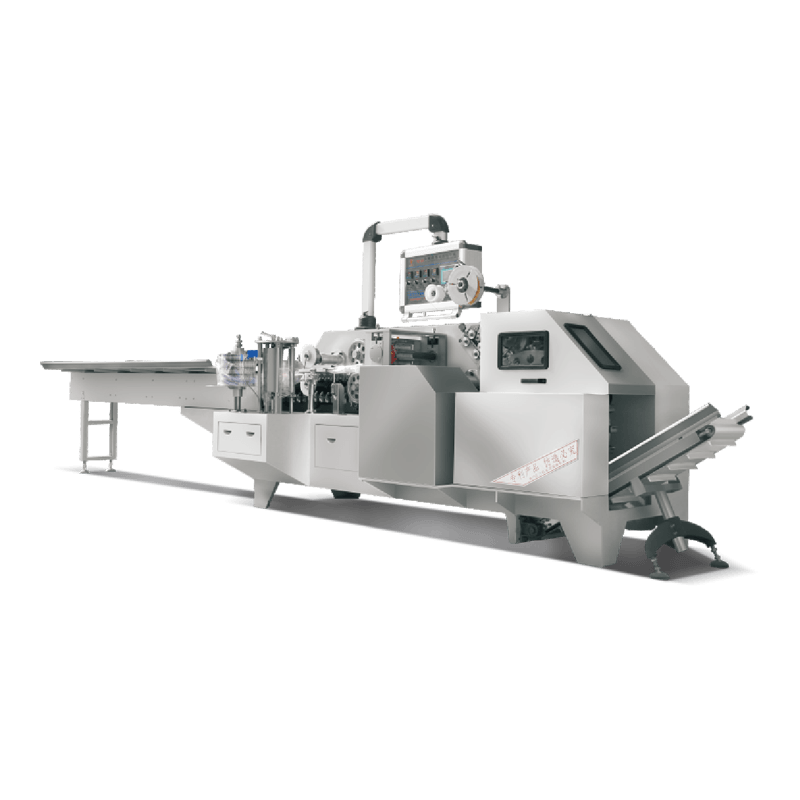
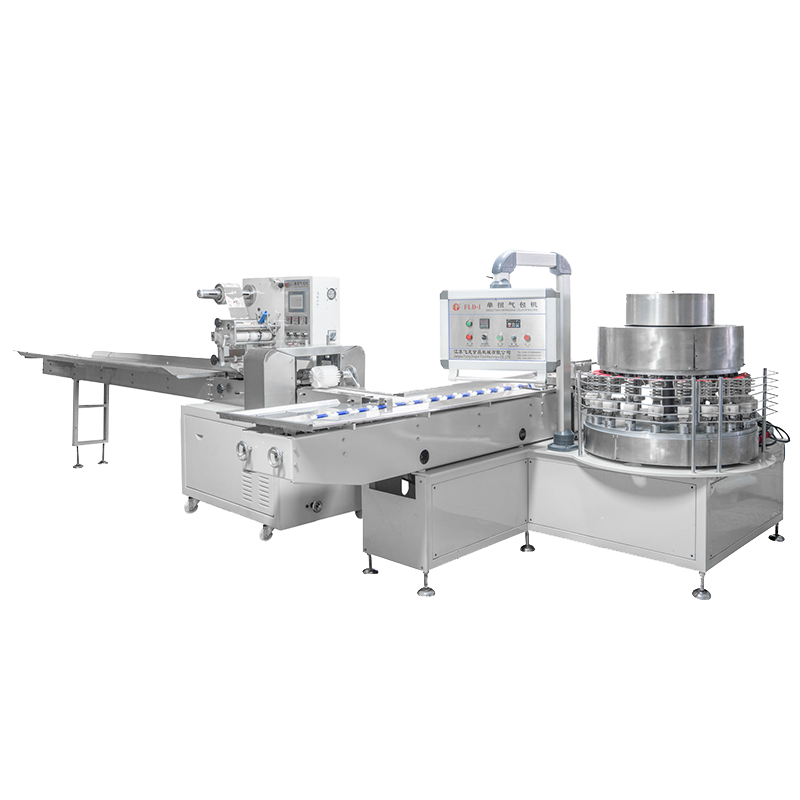
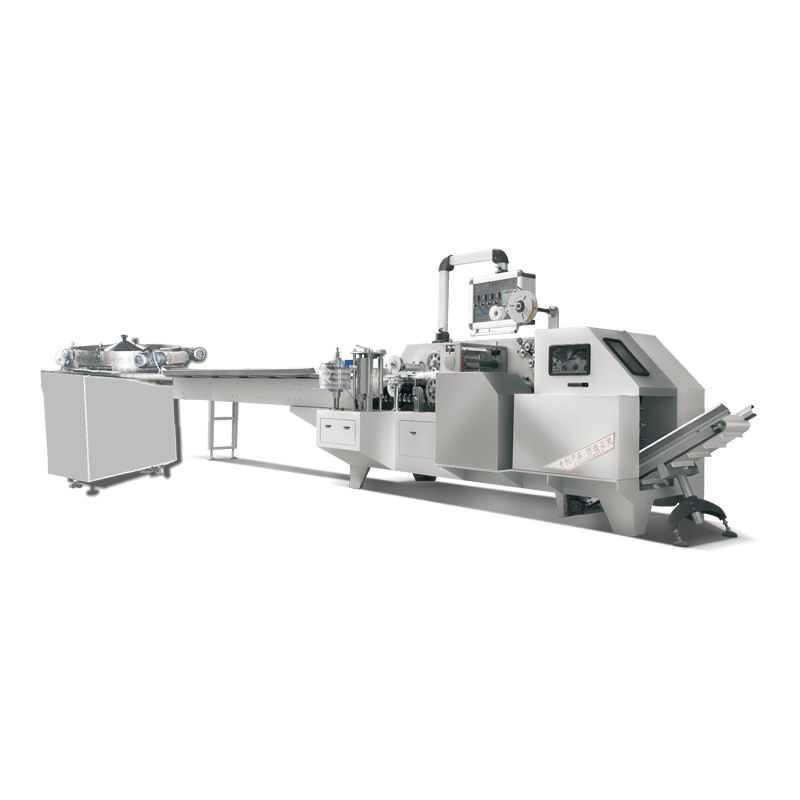
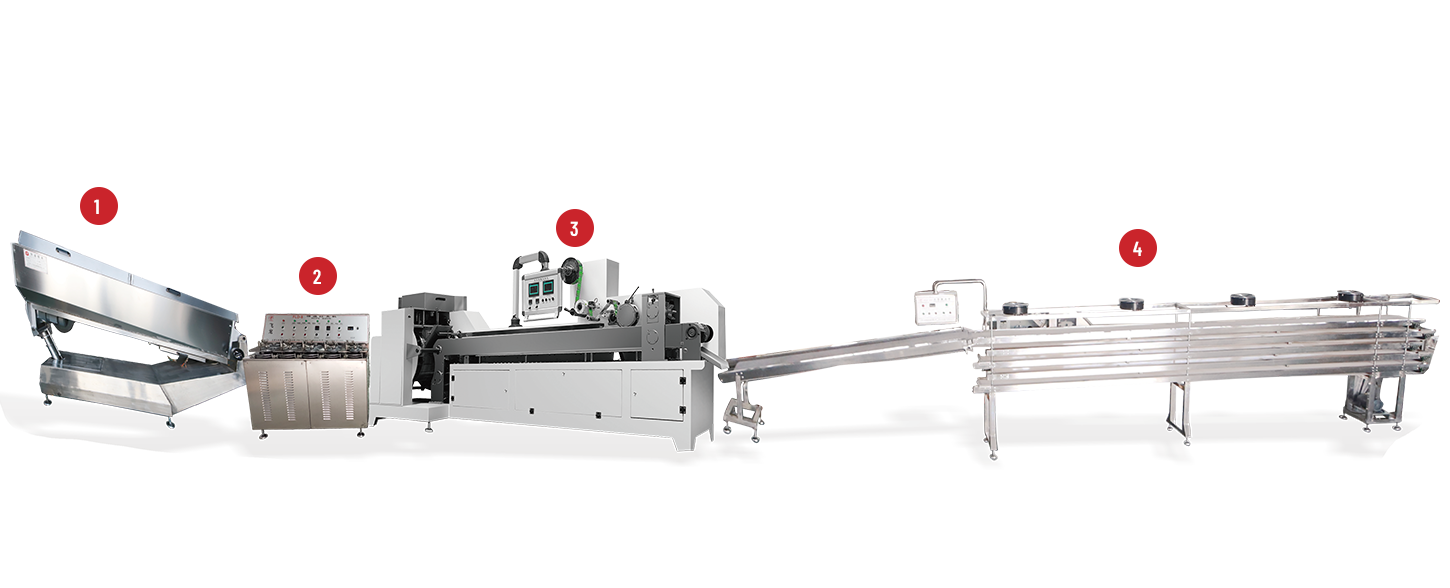
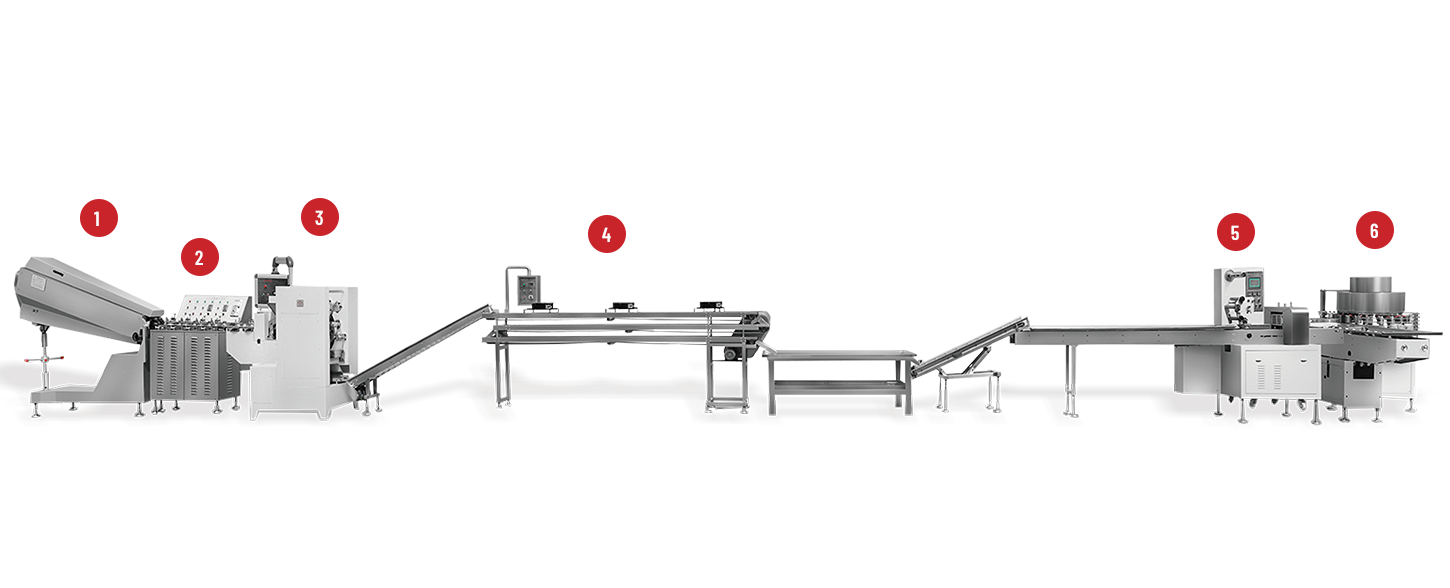
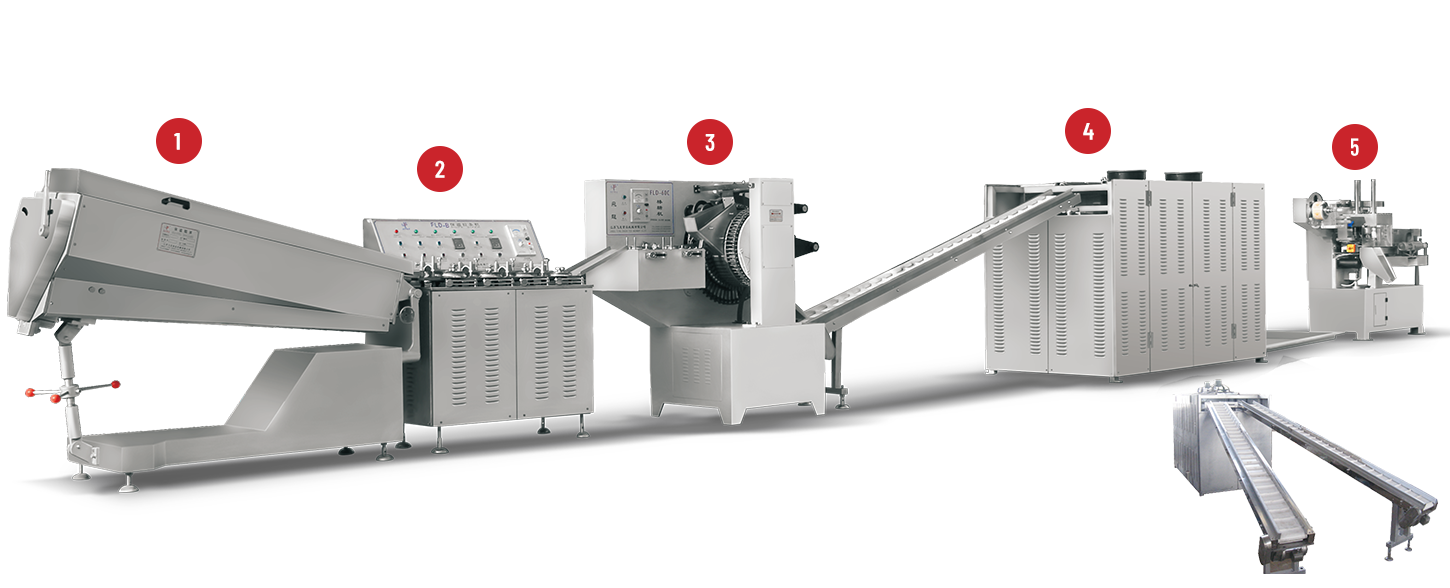
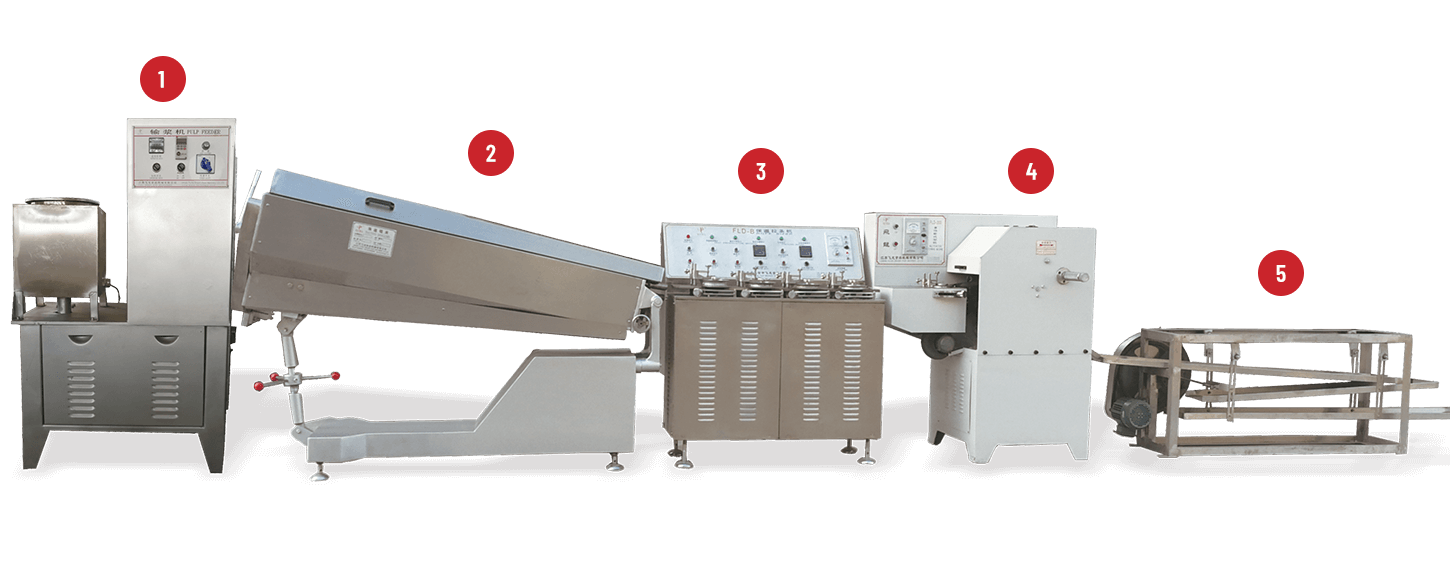
 +86-(0)515-8465666
+86-(0)515-8465666 +86-(0)515-85566996
+86-(0)515-85566996 +86-138 1559 9708
+86-138 1559 9708 flyloong@flyloongcn.com
flyloong@flyloongcn.com 
 Home
Home